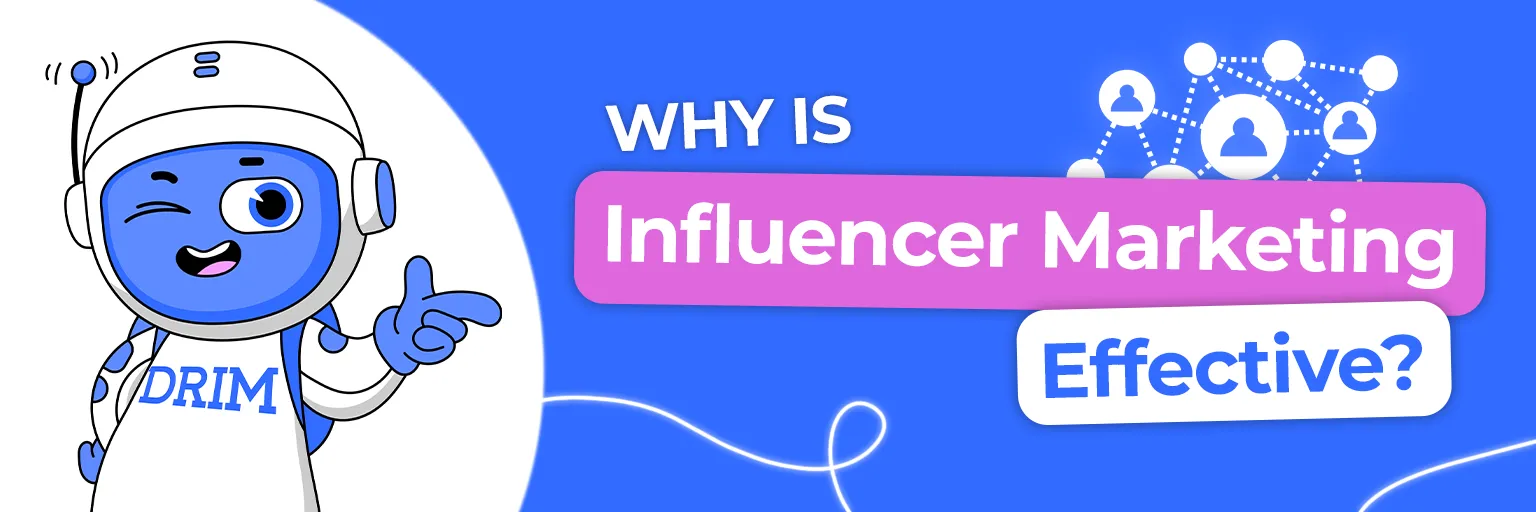
These types of campaigns that resonate with the viewers can directly impact the trust and credibility of the brand, leading to a strong customer base. However, there is more to it that defines the effectiveness of influencer marketing.
So, let’s break down some key reasons why influencer marketing is so effective.
Why Influencer Marketing Is Effective?
Imagine your favorite influencer revealing their must-have item of the season—it's compelling, isn't it? This isn’t just about a recommendation; it’s about creating an experience that feels personal and trustworthy.
That's exactly why influencer marketing works so well. Now, let's explore the key reasons behind this effectiveness:
1. Authenticity and Trust
Influencers build strong relationships with their audience based on trust and consistent communication. Unlike traditional ads, where the audience is skeptical, influencer content feels genuine because it aligns with their followers' interests. When influencers promote a product, their endorsement is seen as a personal, heartfelt recommendation, making it more authentic and believable. Hence, these endorsements maintain high integrity and resonance with the audience.
2. Niche Targeting
One of the greatest strengths of influencer marketing is the ability to tap into specific, niche audiences. Influencers often have expertise or interests in particular fields, allowing brands to connect with highly-targeted communities that are more likely to engage with the product or service being promoted. They also provide the added benefit of language and cultural nuances, which enhances the message intent and relevance of the content for specific audiences.
3. Engaging Content
Influencers are adept at leveraging multimedia platforms—be it Instagram, YouTube, or TikTok—to showcase products in action. They know how to create content that is relatable and engaging to their audience for each platform. Whether it’s in the form of tutorials, unboxing videos, or personal stories, influencers present brand messages in ways that are fun and entertaining. This drives higher engagement than standard advertising.
4. Social Proof
When potential customers see their favorite influencers using and endorsing a product, it acts as social proof, encouraging them to consider the product more seriously. It provides them with tangible evidence of the product’s impact and usability. This psychological effect can make consumers more likely to trust a brand and take action.
5. Cost-Effective Strategy
Compared to traditional forms of marketing, influencer marketing can offer a higher return on investment. Especially with models like DRIM’s Cost-Per-Action (CPA) system, brands only pay for actual results—whether it’s sales, sign-ups, or another measurable action. This means influencer marketing can be more affordable while still driving significant results. In other words, influencer marketing is not just cost-effective but also resource-efficient.
When Is Influencer Marketing Not Effective?
While influencer marketing has tremendous potential, it’s not foolproof. When poorly executed, campaigns can fall flat. Here are some common mistakes brands make that can make influencer marketing ineffective.
1. Poor Influencer Selection
Choosing the right influencers is one of the most critical steps in influencer marketing. If a brand fails to vet their influencers properly and chooses someone whose audience doesn’t align with the brand’s target demographic, the campaign will struggle to generate meaningful results.
2. Lack of Clear Objectives
A common error brands make in launching influencer campaigns is a lack of clear, and defined goals. If you don’t know what your goal is —whether it's brand awareness, lead generation, or sales—your campaign won’t be able to track or achieve the desired outcomes.
3. No Audience Targeting
Brands sometimes fail to consider their ideal audience in their influencer marketing campaign design. Without strong audience targeting, the campaign may reach a broad but irrelevant group of people, leading to wasted efforts and expenses.
4. Random Payment for Posts
Some brands randomly pay influencers for posts without measuring the ROI of each campaign. Paying influencers for a few posts without having a clear sense of what return is expected is a common error that can drain marketing budgets without delivering results.
Ride the Influencer Marketing Wave with DRIM
Influencer marketing allows you to connect with niche audiences through trusted voices. But, success depends on careful planning and smart strategy. By avoiding common mistakes and planning well, brands can make the most of influencers to boost their message and get clear results.
This is where DRIM can be your perfect partner. At DRIM.one, our CPA-based model ensures brands pay only for measurable, valuable actions like sales or sign-ups, making influencer marketing more effective and results-driven. So, get ready to give your brand the right push with DRIM.one—where every interaction counts.